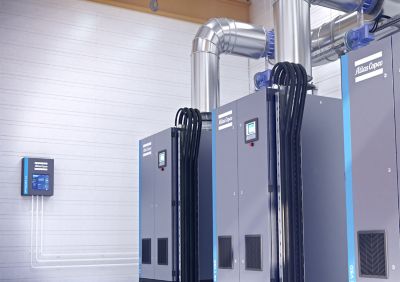How to select compressed air systems in compliance with ISO 8573-1 air standards?
The proper air treatment is an essential part of any compressed air system – no matter which equipment you use and no matter for which application.
Dryers, filters, oil/water separators, aftercoolers, drains, etc. all play their part in protecting your compressed air system, any downstream equipment and your end products from harmful contaminants, such as moisture, oil and solid particles.
While compressed air treatment has obvious benefits – including greater air system reliability, longer maintenance intervals and end product safety – and should be used in all cases, it is mandatory for many applications to ensure that required air quality standards are met.
Therefore, as the operator of a compressed air system, you have to know which type of air treatment and equipment you need in order to be in compliance with the air quality rules that apply to your application.
ISO 8573-1 – your guide to the optimal compressed air treatment
Fortunately, there are many resources you can consult to ensure that you are using the right equipment and processes.
The most important is ISO 8573-1 (ed. 2010) – an internationally recognized air quality standard that is divided into seven air quality classes and the three main types of contaminants. ISO 8573-1 will serve as your essential guide to determine how clean your air has to be. Essentially, it defines how many contaminants your air is still allowed to contain at a specific point in your compressed air system after it has been treated.
In some cases, this figure can be quite high. For example, if your application calls for Class 6 air, then it can contain any number of solid particles (as noted above, there are other reasons to use compressed air treatment but, in this scenario, it would not be mandatory).
In other cases, the requirements are very stringent. For example, Class 1 air, is only allowed to contain up to 10 particles sized 1 to 5 micron or no more than an oil content (including vapor) of 0.01 mg/m3. In the case of water, the permissible limit depends on the pressure dew point.
Therefore, in order to determine your compressed air treatment needs, you first have to know the ISO 8573-1 class for your application. As you can see below, the class requiring the highest air quality is Class 0. In this case, there are no specified contamination levels and no specific pressure dew points but they have to be below those of Class 1.
It should also be noted that some applications may call for different air quality classes for the different contaminants. For example, the required air quality may be Class 1-2-2, which means it has to meet Class 1 with regard to solid particles and Class 2 with regard to oil and water.
ISO 8573.1 2010 air quality classes table.
Finding the right compressed air treatment based on ISO 8573-1 air quality standard
Because compressed air is inherently dirty, it is impossible to meet the more stringent air quality classes without the proper treatment.
However, complying with the requirements of ISO 8573-1 air quality is not problem at all with the right and properly sized equipment, professional installation and maintenance.
For example, if your application calls for Class 0 or Class 1 air quality in terms of oil (which would be the case for any process in which the compressed air comes into contact with food or pharmaceuticals), then the easiest way of meeting the standard is by using an oil-free compressor. This would already eliminate the need for an oil-removal filter (although you would want to make sure that your ambient air does not contain significant traces of fossil fuels).
A properly sized dryer, on the other hand, can help you meet even the most stringent requirements with regard to water in your compressed air. When it comes to dryers, it is important to note that they consume the most energy among your air treatment equipment, which is why you should consider an energy-efficient model to keep operating costs down.
Finally, when it comes to particles (as well as oil), you can install filters to ensure that you meet any air quality requirements. There are different types to choose from and you should always make sure that your filters are properly maintained and replaced on a regular basis.


